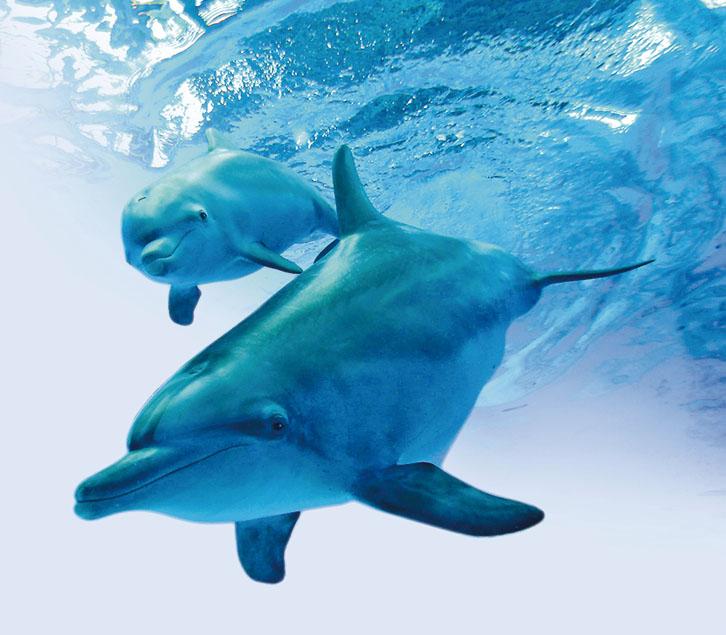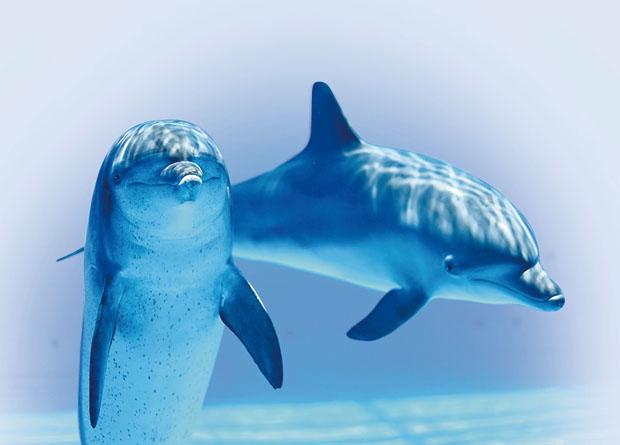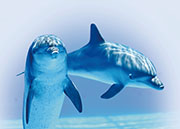Animal:The playful Indo-Pacific Bottlenose Dolphin
【明報專訊】You may be familiar with the dolphins in Hong Kong, named Indo-Pacific humpback dolphins or Chinese white dolphins. Did you know that they may sometimes form groups with other dolphin species? One of them is the Indo-Pacific bottlenose dolphins(印度太平洋樽鼻海豚).
Ultrasonic players
Indo-Pacific bottlenose dolphins play by chasing each other and splashing water, very much like children do.
There are cool ways for these dolphins to communicate with each other. Each of them has a unique whistle so that others in the group can identify it, like how you tell which friend is talking by hearing their voice. They also communicate by touching — for example, they rub their flippers against each other as a sign of closeness. This is seen between mothers and calves (幼兒), as well as between breeding mates.
Like all dolphins, Indo-Pacific bottlenose dolphins have the superpower of echolocation (回聲定位)! They can make ultrasonic clicks. As the ''echoes'' or returning signals bounce back to them, they use it to find out exactly where each object is in their surroundings. They may not have good eyesight but their sense of hearing more than makes up for it.
Shallow water dwellers
Indo-Pacific bottlenose dolphins live in the tropical waters of the Indian and western Pacific Oceans. They can grow to a size of 2.7m, weighing up to 230kg. The darker topsides and lighter undersides are part of their disguise, making it more difficult for predators to see them in the marine environment. As these dolphins grow older, more spots appear on their undersides. The patterns vary according to their geographic location.
These dolphins prefer coastal waters and shallow reefs not deeper than 300 m. They mainly feed on fish found in their region. Their methods of hunting are very interesting. They may ''kick'' fish onto the sand with their tails or chase small fish onto the shore!
Whistles to get your attention
Since Indo-Pacific bottlenose dolphins live in shallow waters, they are affected by fishing and coastal human activities. They are victims of bycatch, the unintended catch in fisheries. The shark nets set up to protect sea bathers and abandoned fishing nets are also fatal traps to dolphins. Water pollution, land reclamation, dredging and harbour activities add to the threat. Commercial fishing depletes food sources. Marine litter are often mistaken for food, which may block the dolphins' digestion system and threaten them with toxic chemicals.
We don't want the dolphins to disappear, do we? Let's start conserving them by reducing waste and water pollution. What ideas do you have to do that in your daily life?
Text and photos: Ocean Park Hong Kong
[Smarties' Power English 第303期]







